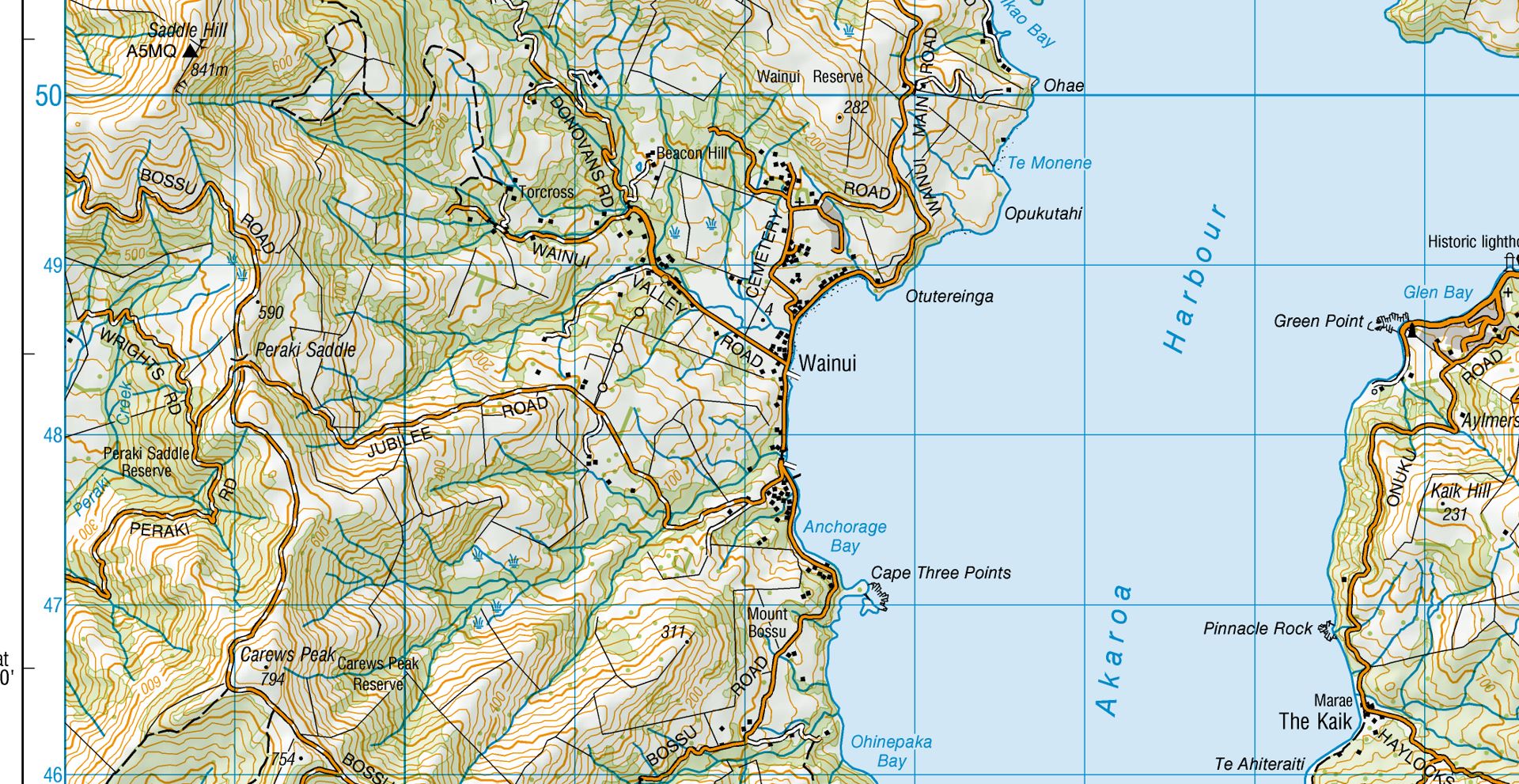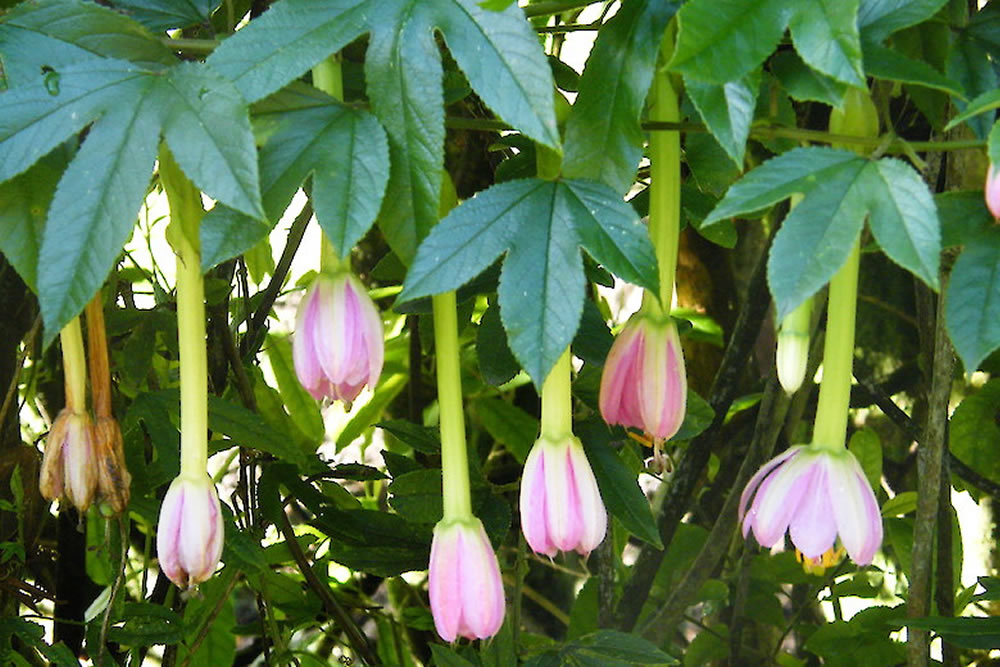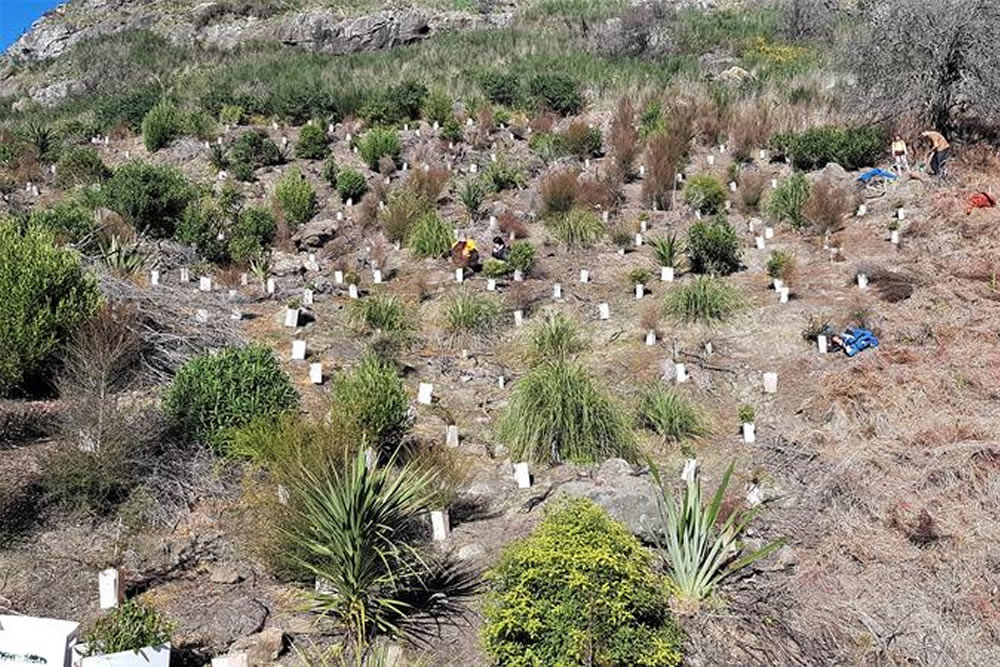
Our Landscape
Wainui, and more specifically the Wainui Valley Catchment, is located on the west side of Akaroa Harbour on the more southerly aspect of Banks Peninsula. The catchment is bounded by the harbour and then somewhat naturally by a ridgeline extending in a large semicircle around the bay. While predominately rural, a small settlement exists with a number of permanent residents, and a more significant number of holiday homes, with perhaps a little over 200 dwellings in total.
Project Scale:
1. A total of 1600 hectares approximately, divided across 286 land parcels.
2. The top 2 land parcels (private) comprising 567ha, or 36% of the catchment.
3. 10 parcels (including DoC) comprising 1138ha, or 73% of the catchment.
4. 20 parcels comprising 1362ha, or 88% of the catchment.
5. DoC or scenic reserves accounting for 171ha, or 11% of the catchment.
6. 180 small land parcels, understandably mostly in the urban clusters around the bay and coastline.
The full catchment and parcel map can be viewed on a custom Google Map.
Habitat:
The topography of the valley is gentle to moderately sloping in the lower regions, to steep in certain valleys, with rocky outcrops. The catchment ranges from sea level to a maximum of 841m, dissected by a number of streams, ridges and bush fragments.
A wide variety of habitat exists, with an estimated 60-70% in pastoral use, the remaining being scrubland or manuka primarily, with some more mature native bush in valleys. There is very little old growth, aside from a few specimens of kahikatea on Donovan’s Rd. There is some pine plantation still standing, and in some areas, specifically towards Carew Peak, a number of marshy areas in the valley basins.
Can we Trap This?
While many areas, especially those nearer the settlements are quite accessible, many areas, particularly those in the upper catchment areas, are only accessible on foot (given permission) with rugged terrain in some areas. So yes, some of it is “easy” and accessible, other sections are significantly more difficult.
Our goal is to start on the easy stuff first, and as resources and/or technology changes, we can then start tackling the harder stuff!
reducing Weeds

Invasive weeds smother native forest, bush or the ground and prevent native seedlings from regenerating. Removing weeds gives our native vegetation a chance to return to its natural state and provide a home for bird and insects.
removing Pests

The impact of introduced predators has had a devastating impact on many native species, with a massive decline in numbers or, sadly, extinction. Removing pests is the #1 way to help revive our native birds, insects and invertebrates.
replanting Natives

Banks Peninsula was covered in a rich and diverse forest that supported an abundant bird and animal population. Regeneration of their “home” is an important step in helping these populations return.
Let’s work together to help reWild Wainui!
Join our community initiative to reduce Weeds, remove Pests and replant Natives.